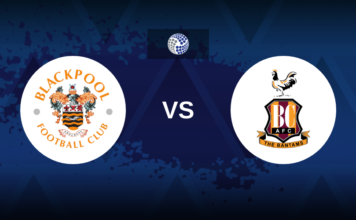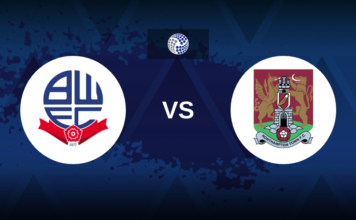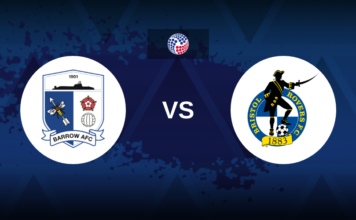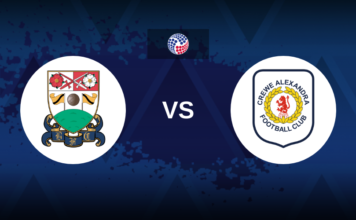Soccer in the United States has always seemed like an enigma—a sport that’s undeniably popular worldwide but has struggled to gain a foothold in the American mainstream.
Major League Soccer (MLS) may finally be making strides, with growing attendance, big-name stars, and a surge of interest. But history shows that the road to making soccer a major sport in America has been bumpy, littered with failed attempts and crushed hopes. The events of 1966-67 offer a perfect microcosm of soccer’s cyclical rise and fall in the U.S.
Soccer in Early 20th Century America
Contrary to popular belief, soccer—or “football” as it’s known elsewhere—was popular in the U.S. long before the recent MLS boom. The game’s origins in America date back to the 1860s, flourishing in cities with large immigrant populations. Leagues like the Bristol County League (1886), St. Louis League (1886), and the National Association Football League (1895) sprouted, concentrating mainly in New York and New Jersey.
In 1921, the first significant professional soccer league—the American Soccer League (ASL)—was formed. It competed with the NFL in terms of attendance and attracted top players from Europe, particularly the UK. However, ASL’s aggressive recruitment practices led to conflicts with FIFA, culminating in the “Soccer Wars,” where FIFA threatened sanctions. The Great Depression delivered the final blow, leading to the ASL’s collapse in 1933. Soccer in the U.S. became a desolate landscape, barely surviving in minor leagues, overshadowed by more popular American sports like football, baseball, and basketball.
The 1966 World Cup Sparks Renewed Interest
After decades of soccer laying dormant, the sport received an unexpected jolt in the summer of 1966. The World Cup, broadcasted to American audiences for the first time, saw surprising viewership numbers. Buoyed by this newfound interest, investors sensed an opportunity. The subsequent World Cup documentary, Goal, cemented the belief that soccer could finally succeed in America.
By late 1966, three competing groups had emerged with plans to form a professional soccer league: the National American Professional Soccer League, the National Soccer League, and the North American Soccer League (NASL). After negotiations with the United States Soccer Football Association (USSFA), it was the NASL, led by sports mogul Jack Kent Cooke, that emerged victorious, agreeing to USSFA’s financial demands. The league was rebranded as the United Soccer Association (USA), and plans were set for its launch.
However, competition was far from over.
The Battle Between USA and NPSL
The rival leagues refused to give up. The National Professional Soccer League (NPSL) quickly formed from the remaining contenders and blindsided FIFA and the USSFA by signing a TV deal with CBS. While FIFA declared the NPSL an “outlaw league,” the momentum was already in place.
To avoid being overtaken, the USA rushed its own launch, even though its teams weren’t ready. In 1967, both the NPSL and USA kicked off their seasons, with hastily assembled squads and borrowed foreign clubs, setting the stage for a chaotic year in American soccer.
The NPSL, split into Eastern and Western divisions, had bizarre quirks—like awarding six points for a win and additional points for goals scored. Meanwhile, the USA borrowed 12 teams from countries like Brazil, the UK, and the Netherlands, rebranding them with American city names. Yet despite the ambition behind both leagues, they faced the same issue: American audiences simply didn’t care.
Why the 1967 Soccer Experiment Failed
Within a year, the optimism surrounding the soccer leagues fizzled out. Despite initially respectable audience sizes, attendance quickly dropped. Several factors contributed to the quick demise of both leagues:
- Low Quality of Play: Both leagues lacked cohesion. The NPSL’s teams were new and unprepared, while USA’s teams saw the league as a pre-season warm-up. This led to poor-quality matches, frustrating both fans and media.
- Credibility Issues: The NPSL faced credibility issues when referees admitted to calling fake fouls to accommodate TV commercials, damaging the league’s integrity. Both leagues also failed to present homegrown talent, alienating the American audience further.
- Oversaturation: With two separate leagues competing for attention, the soccer market became confusing and oversaturated. The average American sports fan couldn’t keep up with the complex scoring systems and competing teams.
By 1968, the NPSL and USA merged to form a unified league under the NASL name. However, even this combined effort struggled, with many teams folding after the first season. The NASL had a few notable successes, particularly with the arrival of global stars like Pelé in the 1970s, but it ultimately collapsed in 1984.
MLS: Learning from the Past?
Fast forward to today, and Major League Soccer appears to be making more calculated moves than its predecessors. The league has focused on slow, sustainable growth, building dedicated fan bases in cities across the country. High-profile signings, growing viewership, and new stadiums have brought optimism to the sport’s future in America. But the past serves as a sobering reminder: soccer has risen and fallen multiple times in the U.S.
The question remains—will MLS finally break the cycle of soccer’s fleeting popularity in America, or is it destined to follow the path of the NPSL, USA, and NASL? One thing is certain: the sport has deeper roots in the country than many realize. Whether these roots will finally blossom into mainstream success, only time will tell.
Conclusion
The history of soccer in America is a rollercoaster of hope and heartbreak, with every failed attempt laying the groundwork for the next effort. As MLS grows, the league’s leadership must learn from the lessons of the past—focus on quality, engage the homegrown talent, and avoid overreaching too soon. If they do, perhaps soccer in America will finally find a permanent home in the sports mainstream, beyond the ebbs and flows that have plagued it for over a century.







